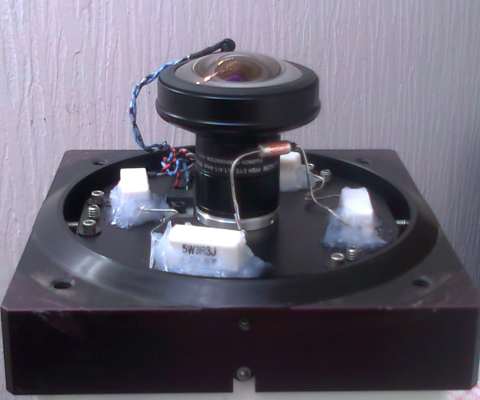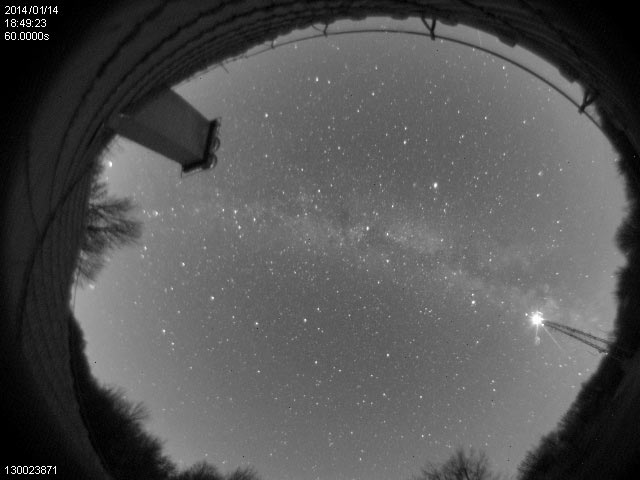Mounting and results
Mechanical construction of the camera is such that there is enough room for four bulky ceramic resistors acting together as the secondary heater to be glued onto the massive metal plate to which the original heater is fixed. This enables generated heat to spread evenly over the horizontal surface before being transferred upwards by convection. Due to specific camera mounting position, it can be expected that the hottest air inside the dome is accumulated at its top. Because of that, we positioned NTC sensor as high as possible, taking care not to obscure the 180° field of view of the fish eye lens. Thermal fuse is also positioned relatively high so as to be able to detect and react to excessive temperatures appropriately.

At the time of writing this article the camera operated beautifully. In contrast to the previous winter, it hasn’t experienced any problems due to condensation, despite the lowest air temperatures recorded so far falling below -10°C. In addition, it also managed to easily melt some 50cm of snow in a single day. It remains to wait and monitor how it behaves in the next few critical months. Since then, we let some of the latest images taken speak in the name of the hardened machine.



